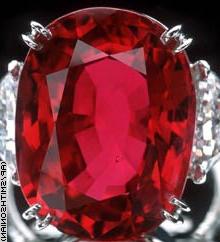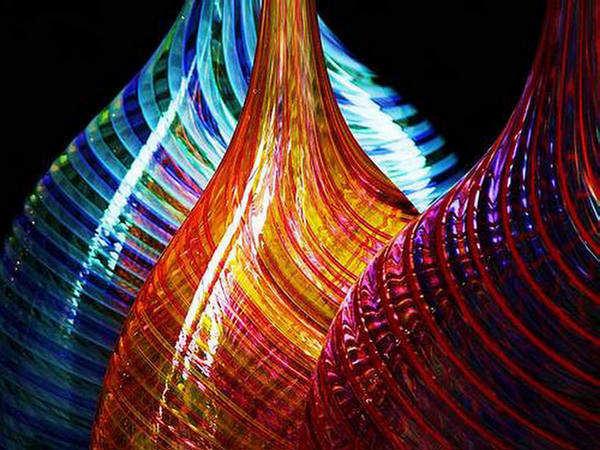Chromium Oxide
Several chemical compounds consisting oftwo simple elements - Cr and O, - belong to the class of inorganic compounds - oxides. Their common name is chromium oxide, then in brackets it is accepted to indicate the valence of the metal in Roman numerals. Other names and chemical formulas:
- chromium (II) oxide - chromium oxide, CrO;
- chromium (III) oxide - chrome greens, chromium sesquioxide, Cr2O3;
- chromium (IV) oxide - chromium oxide, CrO2;
- chromium (VI) oxide - chromic anhydride, chromium trioxide, CrO3.
A compound in which the metal is hexavalent, andthere is a higher chromium oxide. This solid substance is odorless, in appearance it is dark red crystals (in the air they spread out due to strong hygroscopicity). The molar mass is 99.99 g / mol. Density at 20 ° C is equal to 2.70 g / cm³. The melting point is 197 ° C, and the boiling point is 251 ° C. At 0 ° C, 61.7 g / 100 dissolves in water, 63 g / 100 ml at 25 ° C, and 67.45 g / 100 ml at 100 ° C. Oxide also dissolves in sulfuric acid (a chrome mixture that is used in laboratory practice for washing chemical dishes) and nitric acid, ethyl alcohol, ethyl ether, acetic acid, acetone. At 450 ° C it decomposes to Cr2O3.
Chromium (VI) oxide is used in the processelectrolysis (for the production of pure chromium), for chromating of galvanized products, in electrolytic chrome plating, as a strong oxidizer (for the production of indigo and isatin). Higher chromium oxide is used to detect alcohol in the exhaled air. The reaction proceeds according to the scheme: 4CrO3 + 6H2SO4 + 3C2H5OH → 2Cr2 (SO4) 3 + 3CH3COOH + 9H2O. For the presence of alcohol indicates a change in the color of the solution (acquires a green color).
Chromium (VI) oxide, like all compoundshexavalent Cr, is a strong poison (lethal dose - 0.1 g). Because of its high activity, CrO3 causes ignition (with explosions) of organic substances when they come into contact with them. Despite the low volatility, the higher chromium oxide is dangerous by inhalation, as it causes lung cancer. Upon contact with the skin (even with its imminent removal) causes irritation, dermatitis, eczema, provokes the development of cancer.
Oxide with tetravalent chromium CrO2 by externalform is a solid in the form of black tetrahedral ferromagnetic crystals. Chromium oxide 4 has a molar mass of 83.9949 g / mol, a density of 4.89 g / cm³. The substance melts, while decomposing, at a temperature of 375 ° C. It does not dissolve in water. Used in magnetic recording media as a working substance. With the popularity of CDs and DVDs, the use of chromium (IV) oxide has declined. It was first synthesized in 1956 by a chemist from EI DuPont company Norman L. Cox by decomposition of chromium trioxide in the presence of water at a temperature of 640 ° C and a pressure of 200 MPa. Under license, DuPont is manufactured by Sony in Japan and BASF in Germany.
Chromium oxide 3 Cr2O3 is a solidfine crystalline substance from light to dark green color. The molar mass is equal to 151,99 g / mol. The density is 5.22 g / cm³. The melting point is 2435 ° C, and the boiling point is 4000 ° C. The refractive index of a pure substance is 2.551. This oxide does not dissolve in water, alcohol, acetone, acid. As its density approaches the density of corundum, it is introduced into the formulations of polishing agents (for example, GOI paste). This is one of the basic chromium oxides, which is used as a pigment. For the first time in secret technology, it was obtained in 1838 as a transparent hydrated form. In nature it occurs in the form of FeO • Cr2O3 chromium iron ore.
Oxide of divalent chromium - a solidblack or red with a melting point of 1550 ° C. It melts with decomposition. The molar mass is 67.996 g / mol. Chromium (II) oxide of red color is not pyrophoric, and this same substance of black color is pyrophoric. The powder is self-igniting in air, so it can only be stored under a layer of water, since it does not interact with it. Black chromium oxide in pure form is very difficult to obtain.
For chromium oxides with a lower valency, the basic properties are characteristic, and for an oxide with a higher valence, the acid properties are characteristic.



